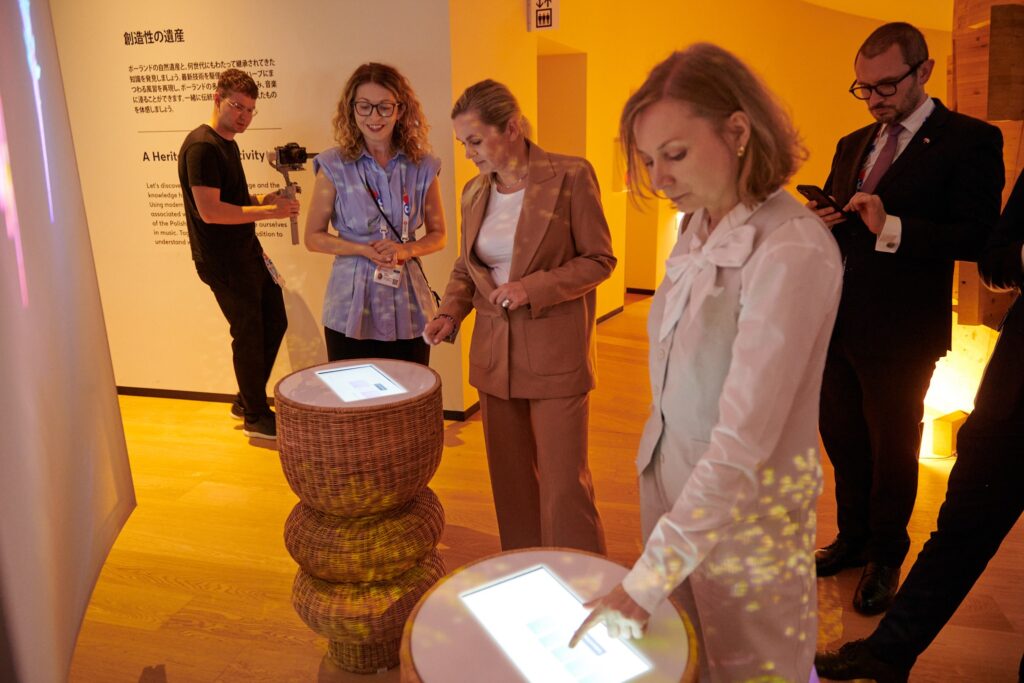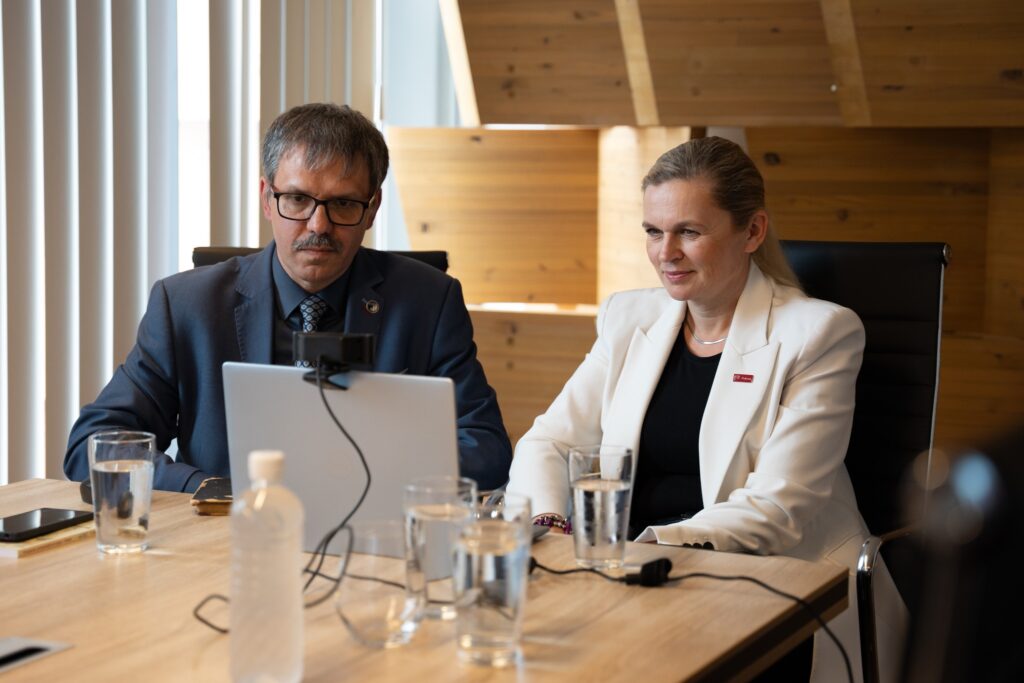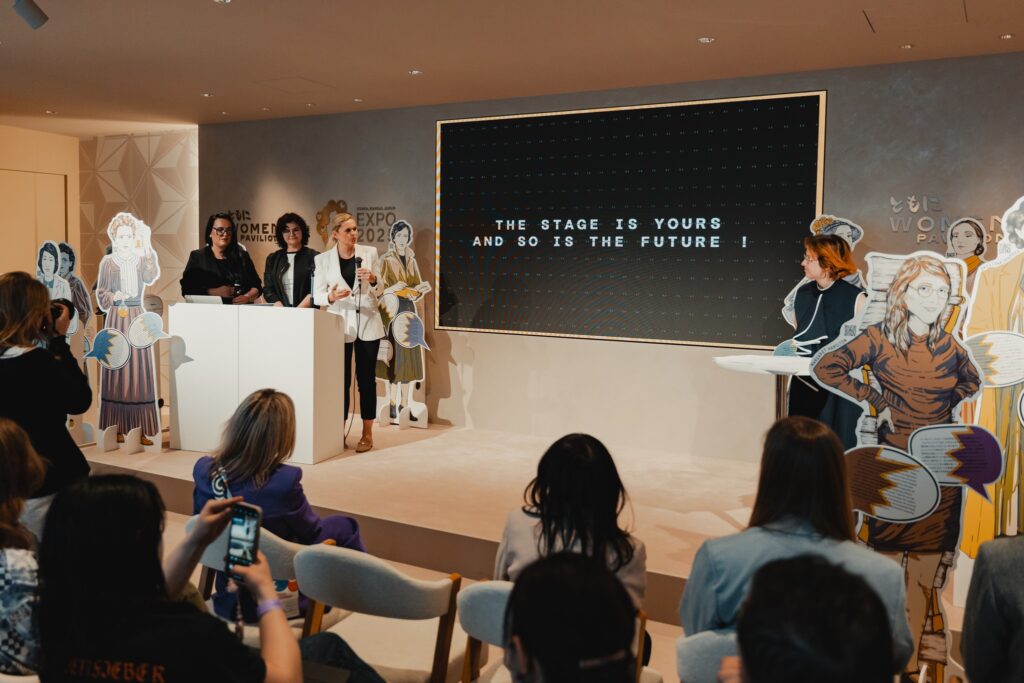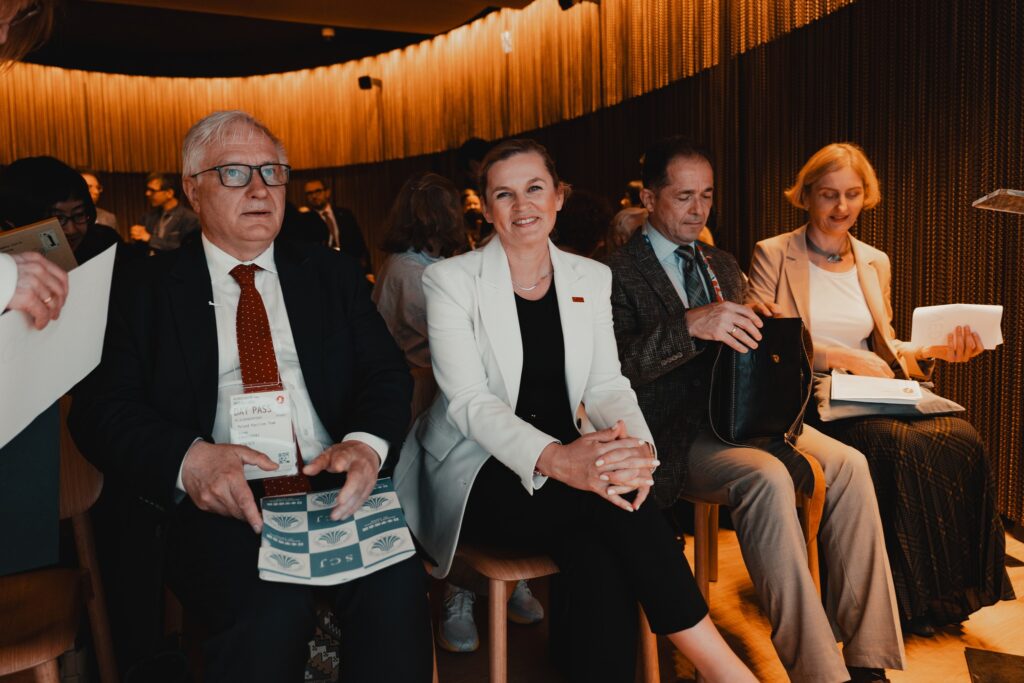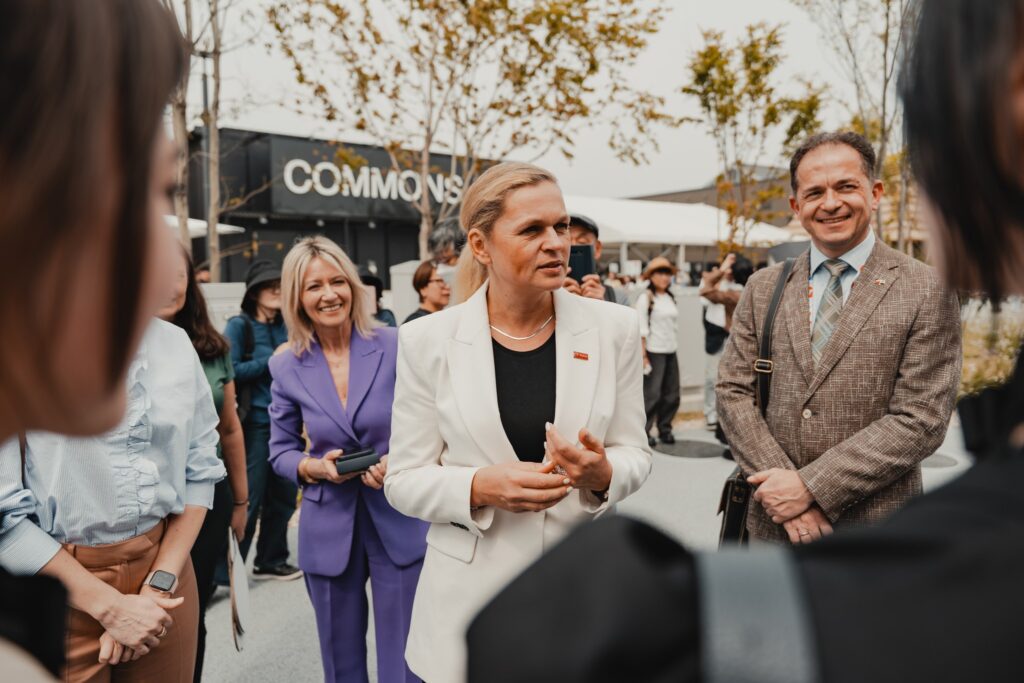Over 15,000 people visited Poland Pavilion in Osaka during the Days of Polish Science and Education at Expo 2025
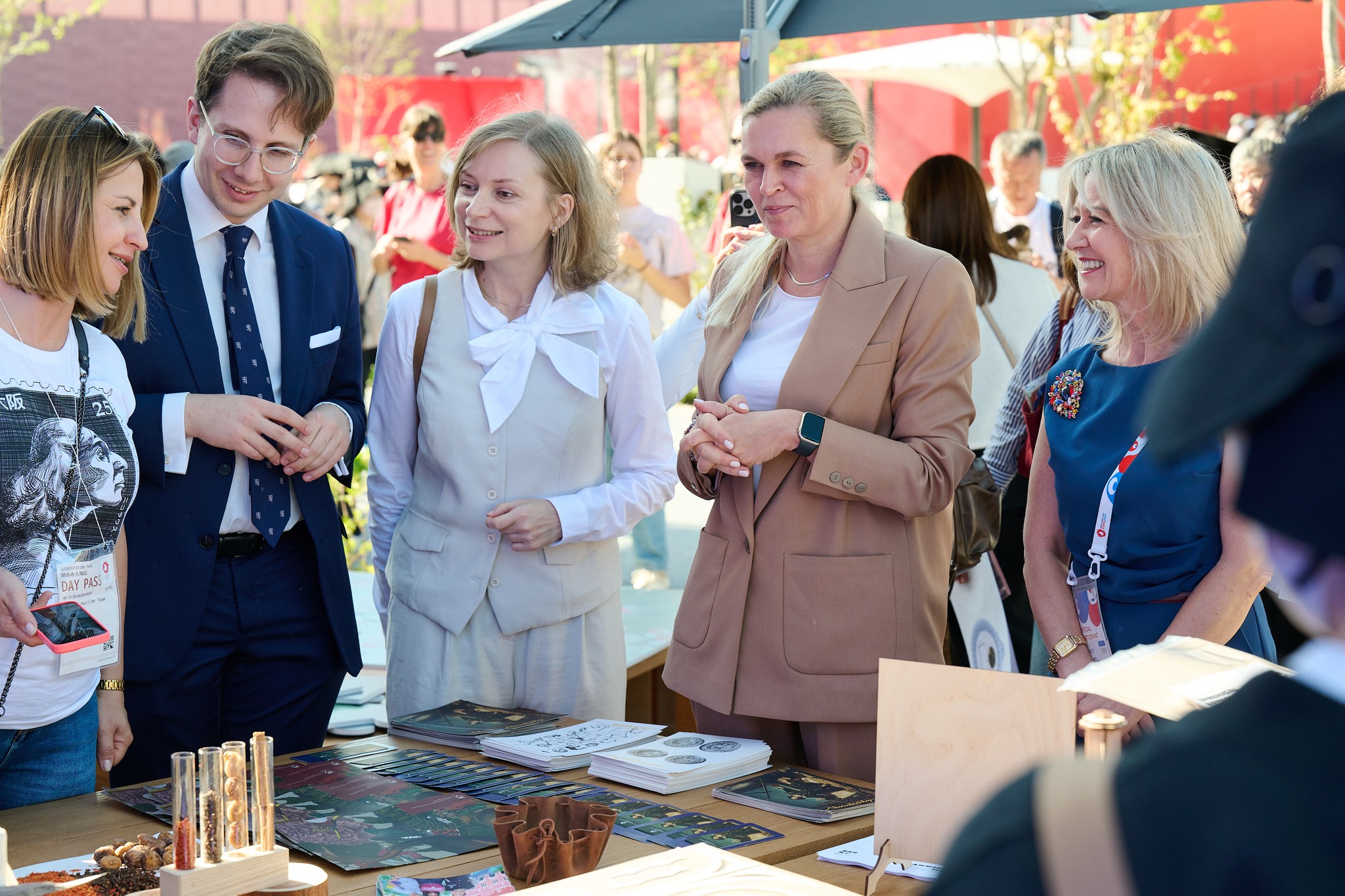
Between 22 and 26 April 2025, the Polish Pavilion at Expo 2025 in Osaka became the centre of science and education.
As part of the intensive program of the Days of Polish Science and Education, the exhibition was visited by as many as 15,662 people. The event was held under the patronage of the Minister of Science and Higher Education, in cooperation with the Polish National Agency for Academic Exchange (NAWA) and leading scientific and academic institutions from Poland.
During the five days of events, 70 educational workshops were held, attended by over 2,000 participants. The programme of the Polish Science and Education Days was co-created by leading universities and institutions: AGH University of Science and Technology (AGH) in Kraków, Academy of Fine Arts in Wrocław, Medical University of Gdańsk, Polish Academy of Sciences, Warsaw University of Life Sciences (SGGW), Jagiellonian University, Warsaw Institute of Banking. The partners of the event were also GEOART and ASTOR.
Special events and international agreements
The Days of Polish Science and Education were attended by the Minister of Education Barbara Nowacka and the Deputy Minister of Science and Higher Education Maria Mrówczyńska. As part of the event, a significant cooperation agreement was signed between NAWA and the Japan International Cooperation Agency (JICA) – one of the most important institutions supporting the academic and scientific community in Japan.
The most important events of the Days of Polish Science and Education in the Polish Pavilion:
- 22 April – Polish Earth Day – on this day, among other events, a scientific conference was held under the auspices of the Warsaw University of Life Sciences (SGGW) and educational workshops organized by the Warsaw University of Life Sciences, GEOART and the AGH University of Science and Technology (AGH). Trees were planted on the campus of SOAI University in Osaka – a partner of the Frederic Chopin University of Music – and the event was accompanied by a music concert. The ceremony was attended by Prof. Rafał Grząka, Vice-Rector of the FCUM.
- 23 April – NAWA Day at the Expo – the programme of this day was dominated by the conference of the Polish National Agency for Academic Exchange (NAWA) entitled “Life sciences universities as drivers of innovation: SGGW debate with Japanese partners”. The event was attended by representatives of as many as 40 universities from Poland and Japan. At the same time, workshops were held with the participation of lecturers from the University of International Relations in Tokyo (Polish studies) and the Academy of Fine Arts in Wrocław.
- April 24 – Polish Space Day – the patron of the day was Dr. Sławosz Uznański – the first Pole preparing for a flight to the International Space Station. As part of the event, a scientific debate of the New Space Foundation entitled “Space Inspirations in Education” was held, which was attended by 55 participants, including three scientists from Japan and one from the United States. In the workshop space in front of the Polish Pavilion, Tony Koniak – one of the youngest handpan music creators, the author of a music piece that landed on the Moon as part of the Copernic Space mission, performed four times. The culmination of the day was a unique, premiere concert for two pianos, which was given at the Higashiosaka Cultural Creation Hall in Osaka by the outstanding jazz pianist Leszek Możdżer. The artist presented the world’s first decaphonic piano, designed to his order by the Polish Academy of Sciences. The concert was attended by 700 listeners.
- 25 April – Polish Women’s Day in Science – on this day, an international scientific conference was held with the participation of representatives of academic circles from Polish, Israel (Jerusalem), Japan and France (Institut Curie). The event was attended by 60 people. Employees of the Maria Skłodowska-Curie Museum in Warsaw conducted an exciting workshop on the model assembly of polonium and radium atoms. In the Women’s Pavilion, the CIPHER GIRLS project was presented, presenting the profiles of 20 women from all over the world involved in intelligence activities. The event was also an opportunity to present the phenomenon of ENIGMA – one of the most important symbols of cryptology of the 20th century.
- April 26 – Economic Education Day and Medics Day for the World – as part of these events, unique online lessons were organized, broadcast directly from the Polish Pavilion. Over 11,300 pupils and students from 369 schools and 32 universities in Poland took part in them. During the classes conducted by Professor Witold Orłowski and Professor Łukasz Hardt, young people learned about the phenomenon of globalization and its impact on national economies. A special guest of one of the lessons was the Minister of Education, Barbara Nowacka, who emphasized the role of economics and entrepreneurship in shaping the competences of the future. An important point of the program was also a workshop devoted to economic education and the legacy of Janusz Korczak. In the Polish Pavilion, the original edition of the book “The Bankruptcy of Little Jack” – a symbol of the 100-year tradition of economic education in Poland – was presented. Thanks to modern technologies, nearly 1,000 students from 31 Polish diaspora schools from 13 countries also participated in a special lesson, connecting online with a Polish school in Tokyo. On that day, the Medical University of Gdańsk also organised specialist educational workshops, and 38 artists of the Chamber Orchestra of the Frederic Chopin University of Music gave a unique concert for 150 listeners.
High substantive level and record attendance
The participants of the Days of Polish Science and Education emphasized the high substantive level of the events and the value of international meetings and exchange of experiences. The large attendance and active participation in the workshops confirm the growing interest in Polish science in the international arena.
